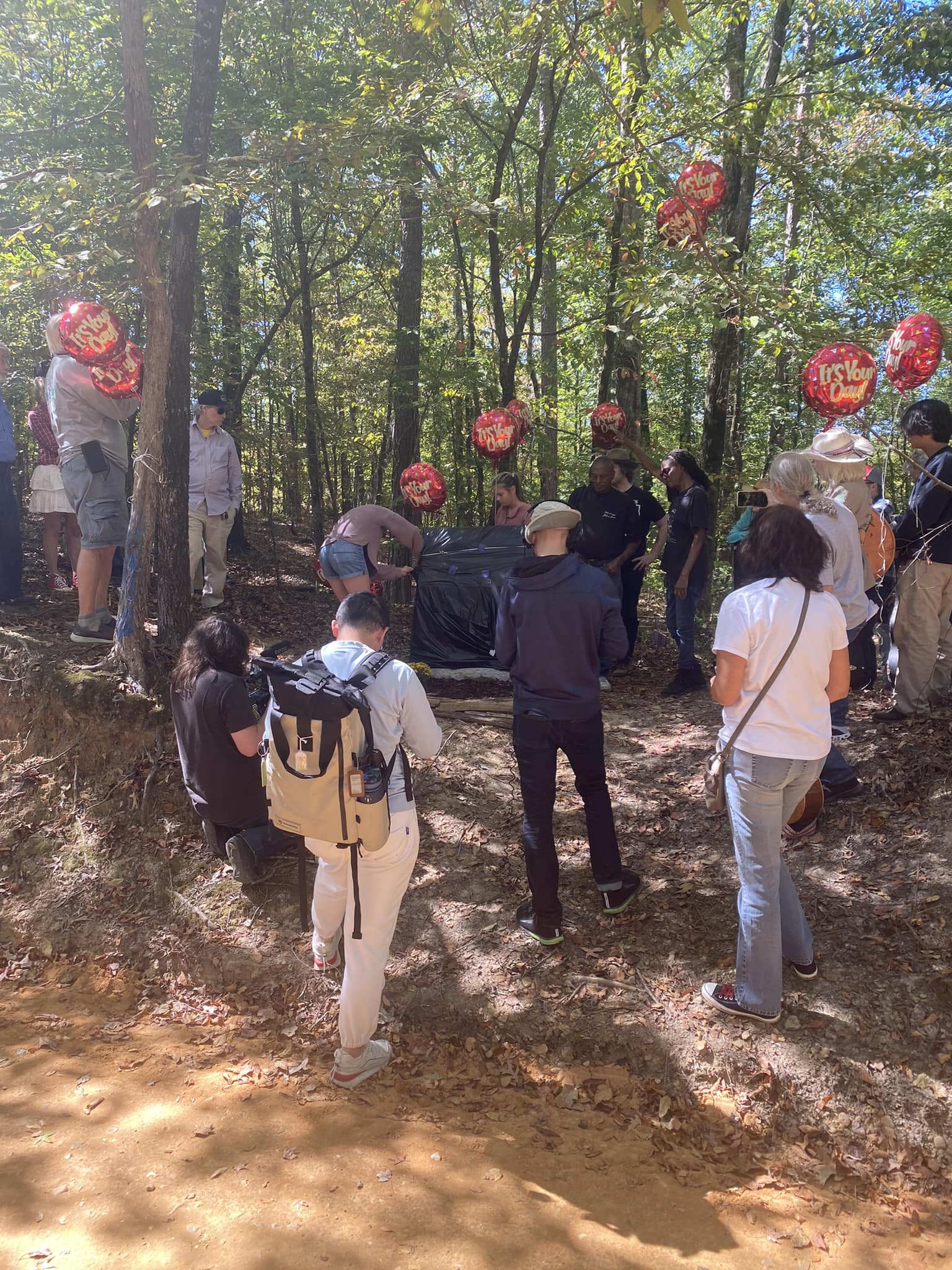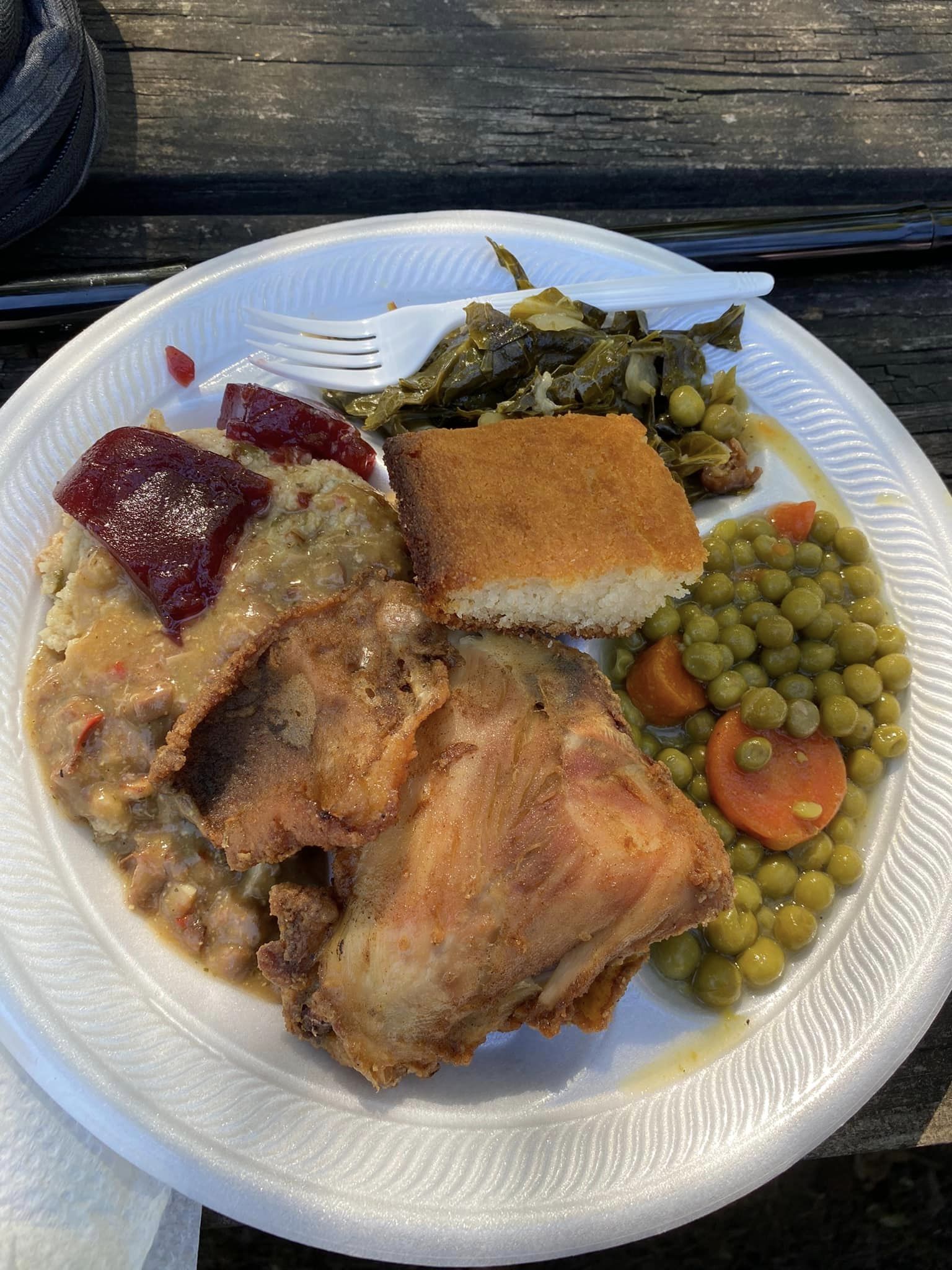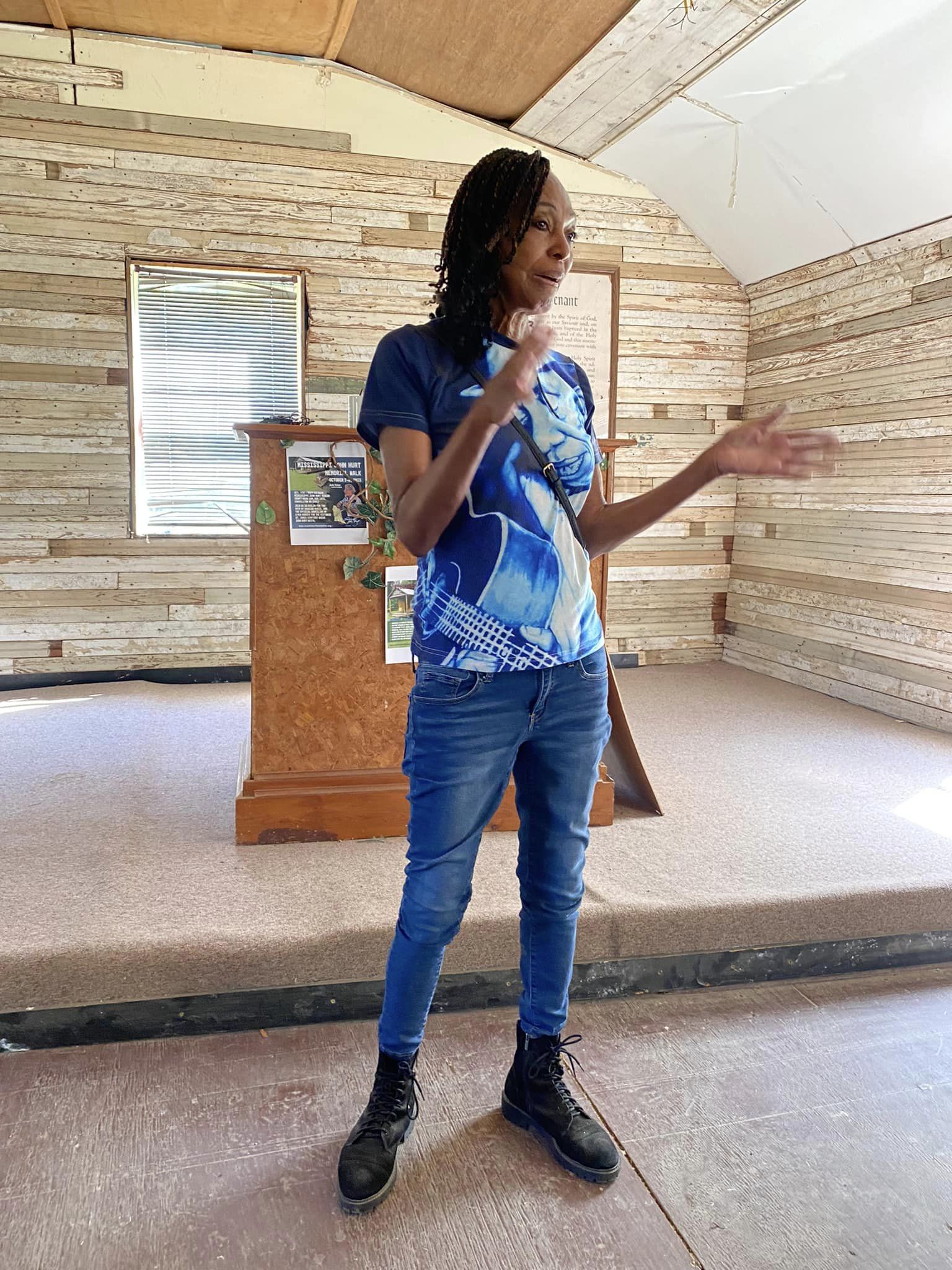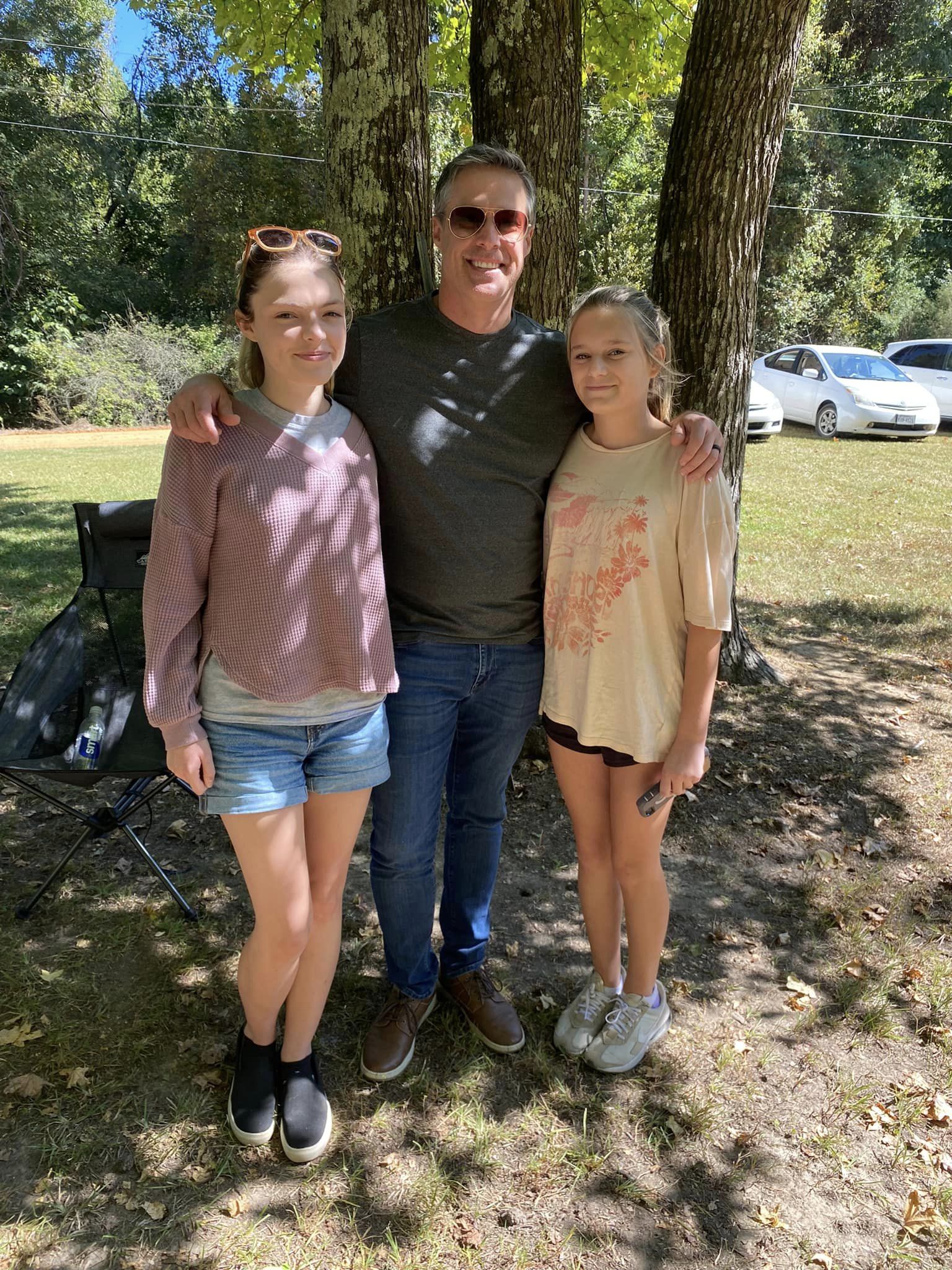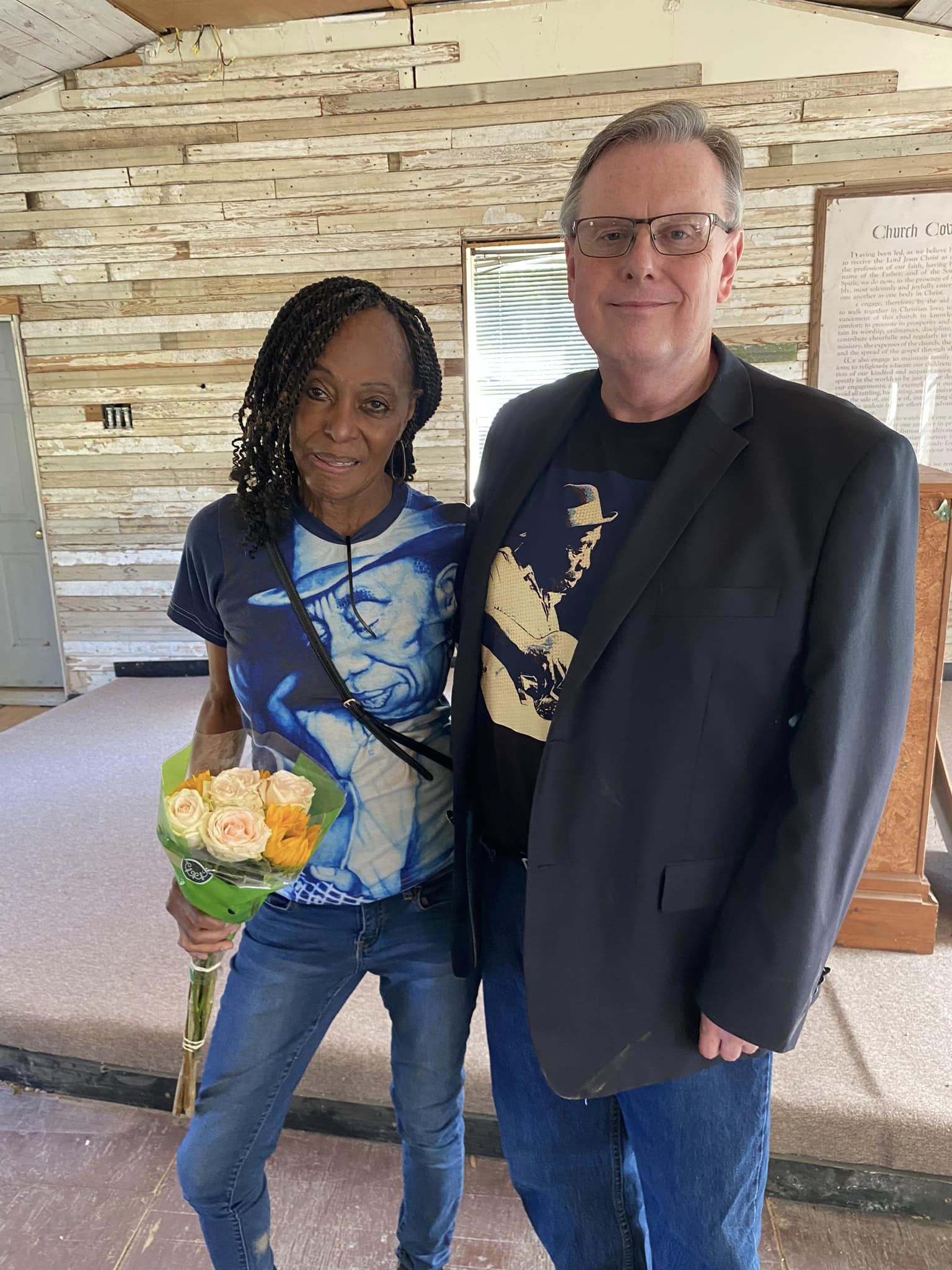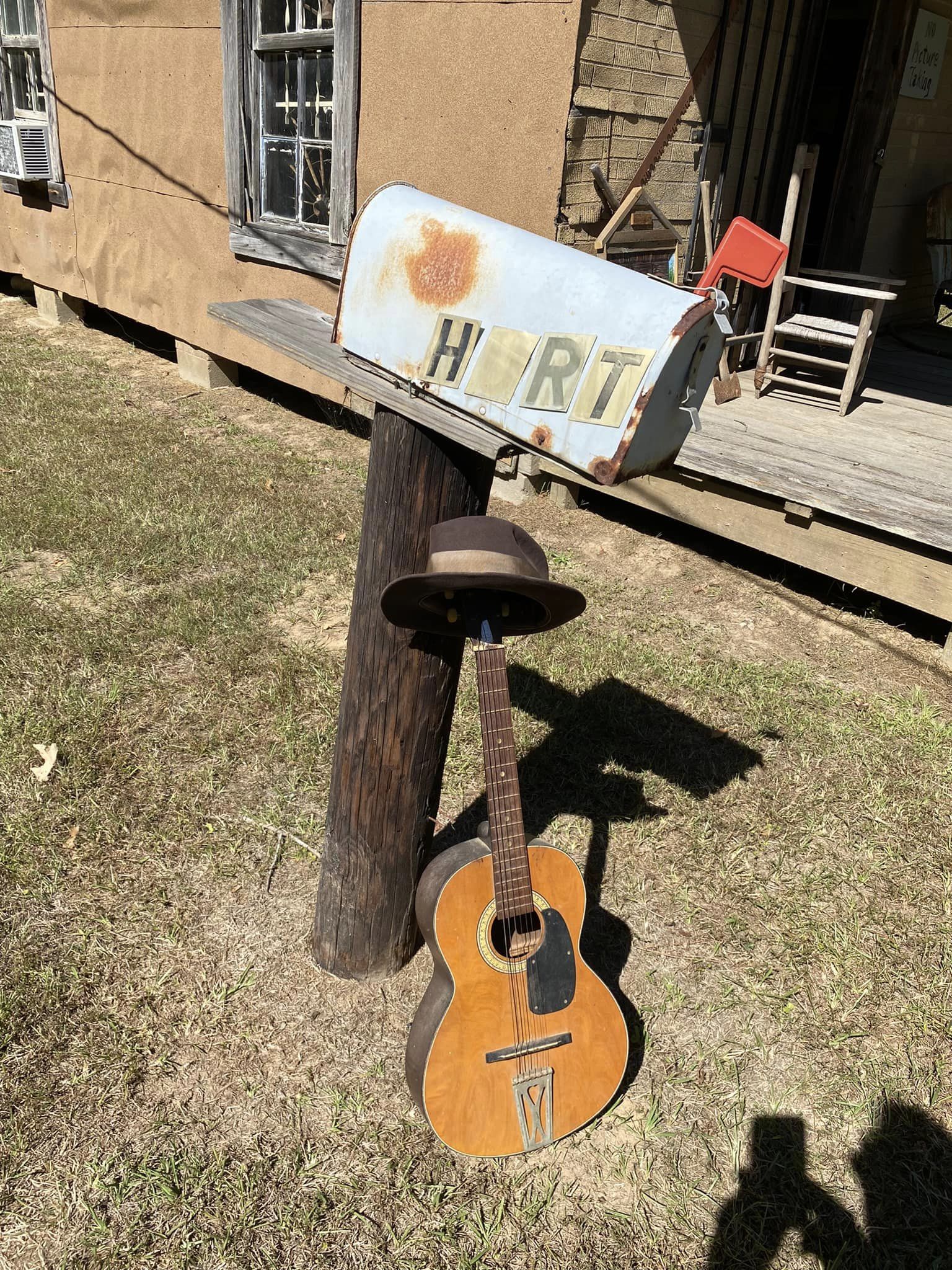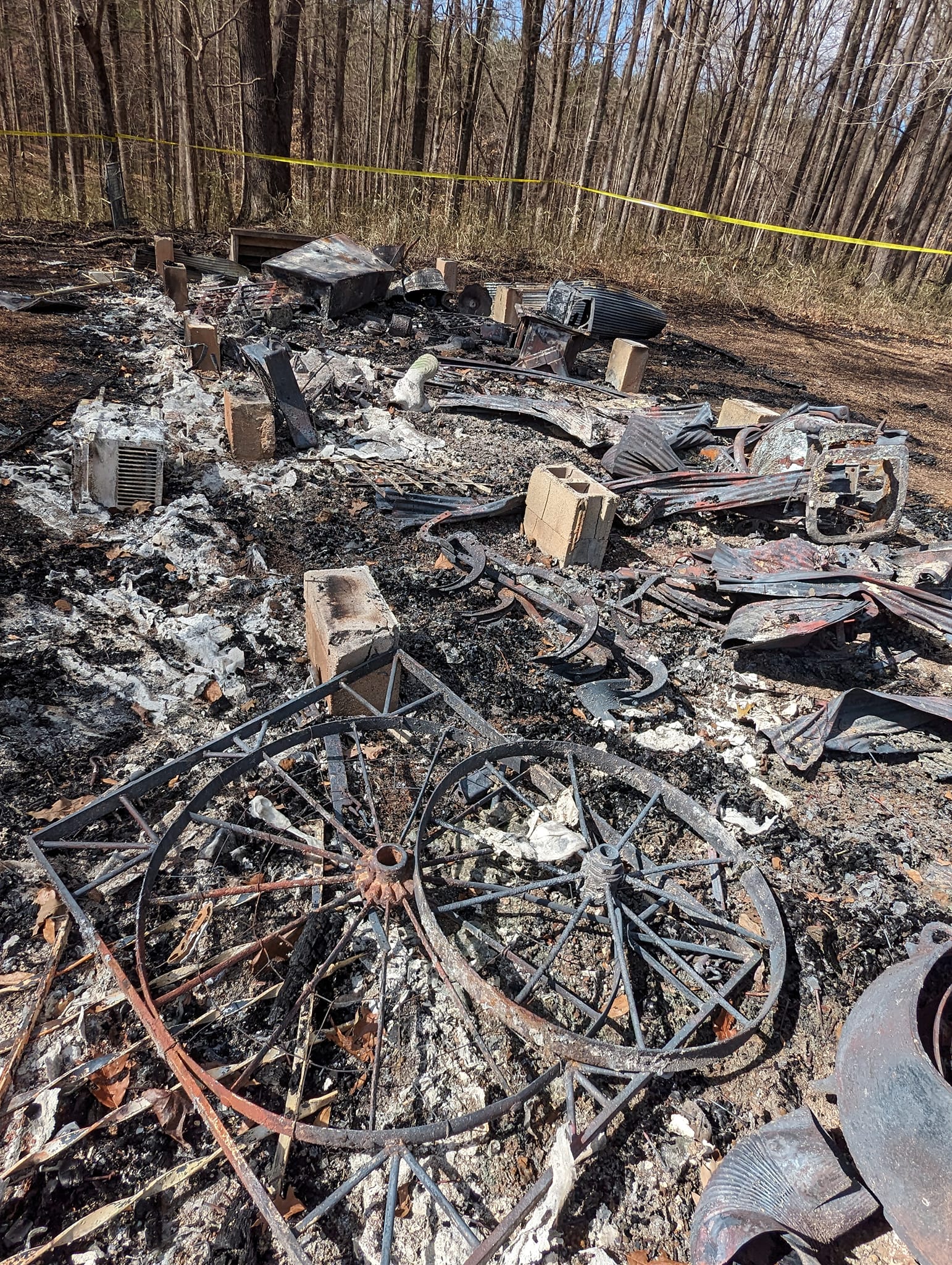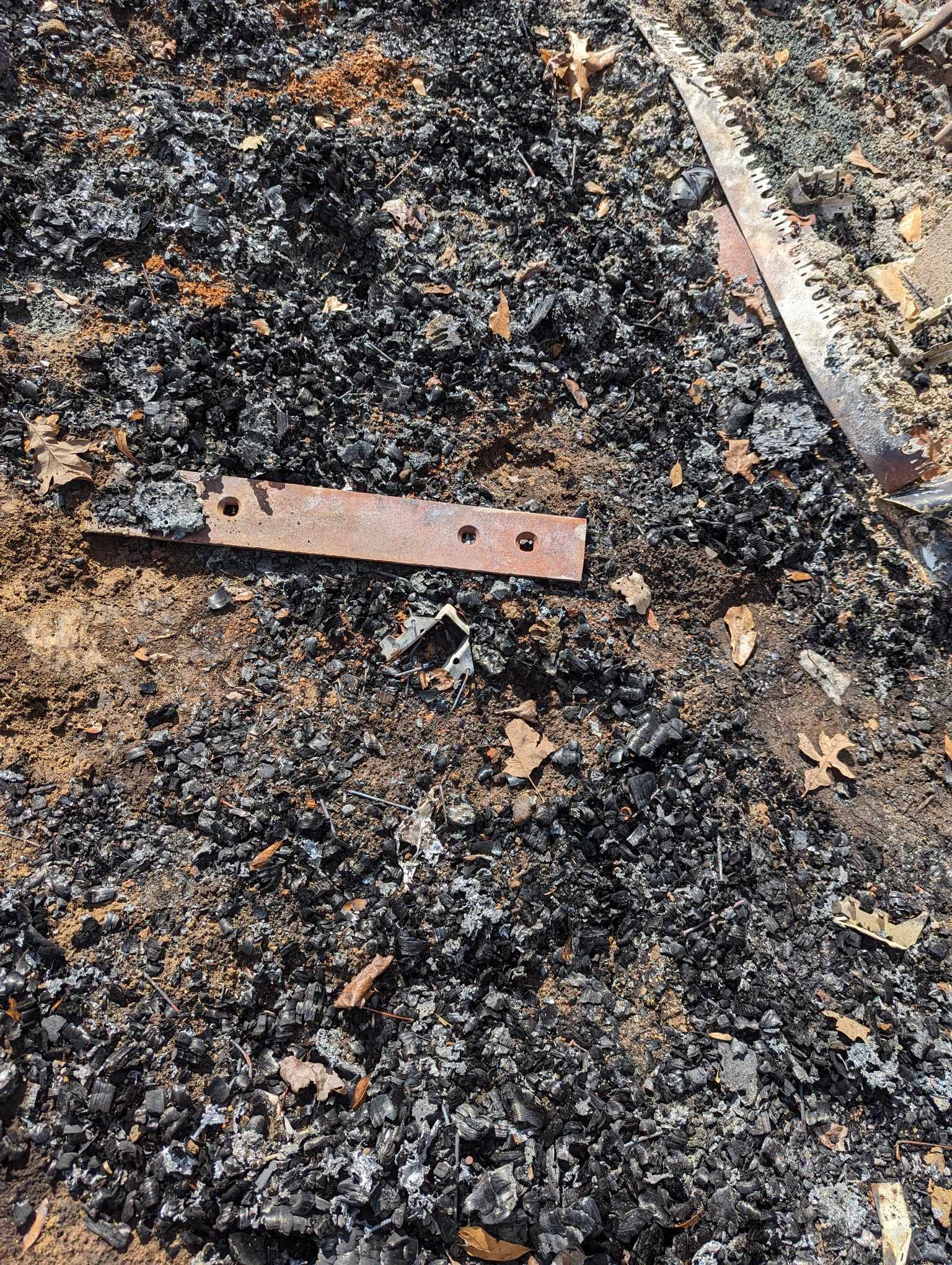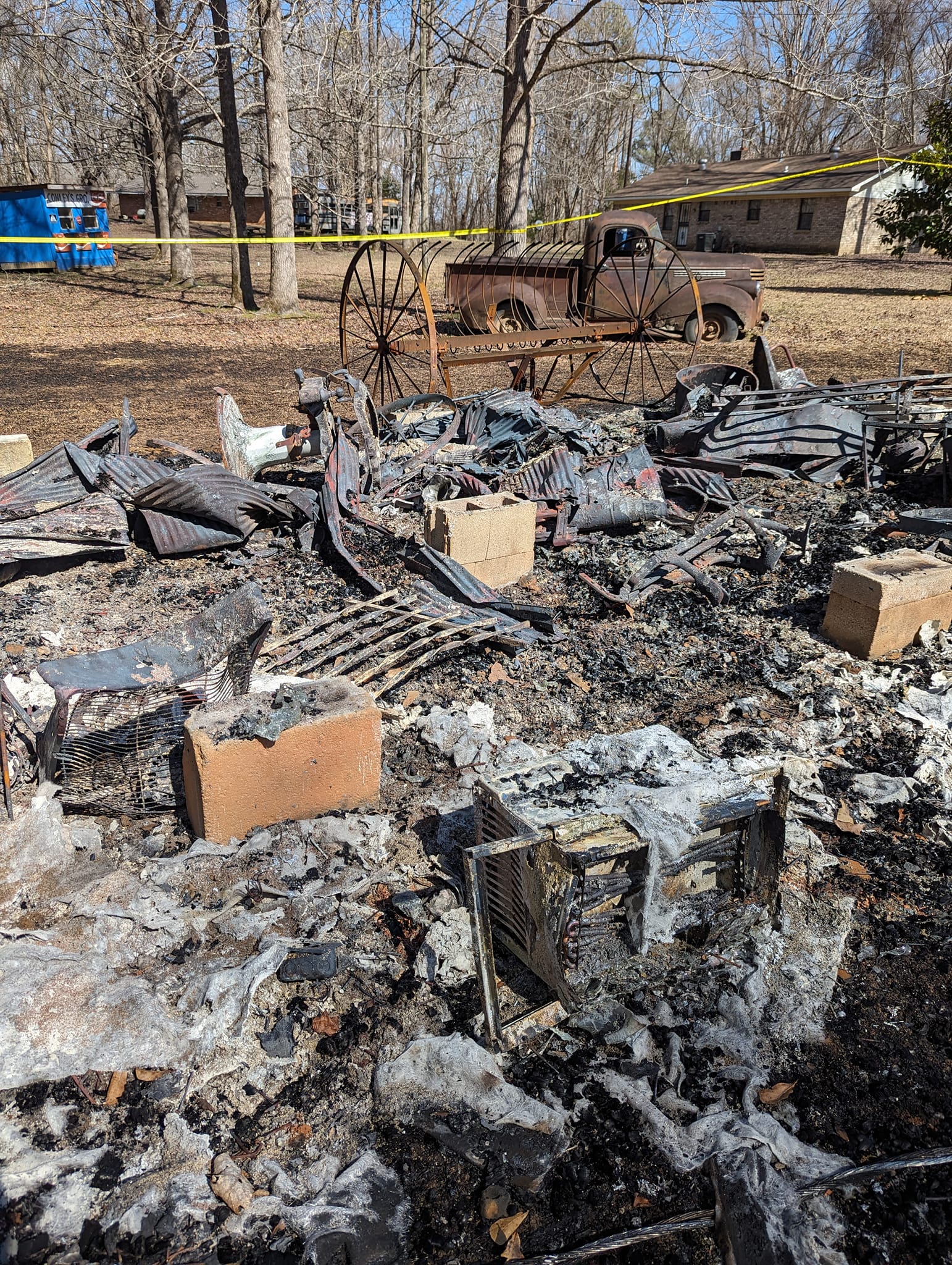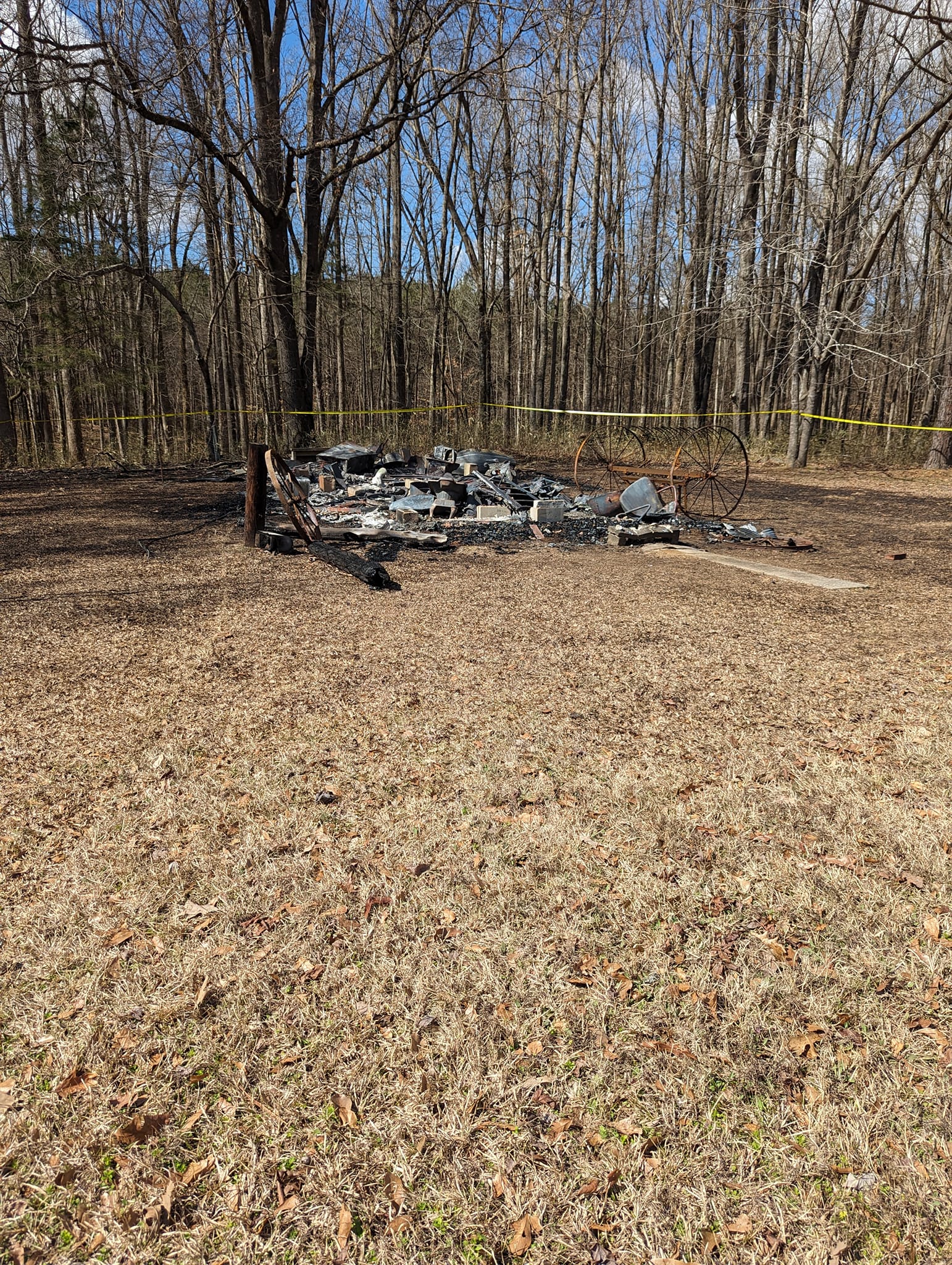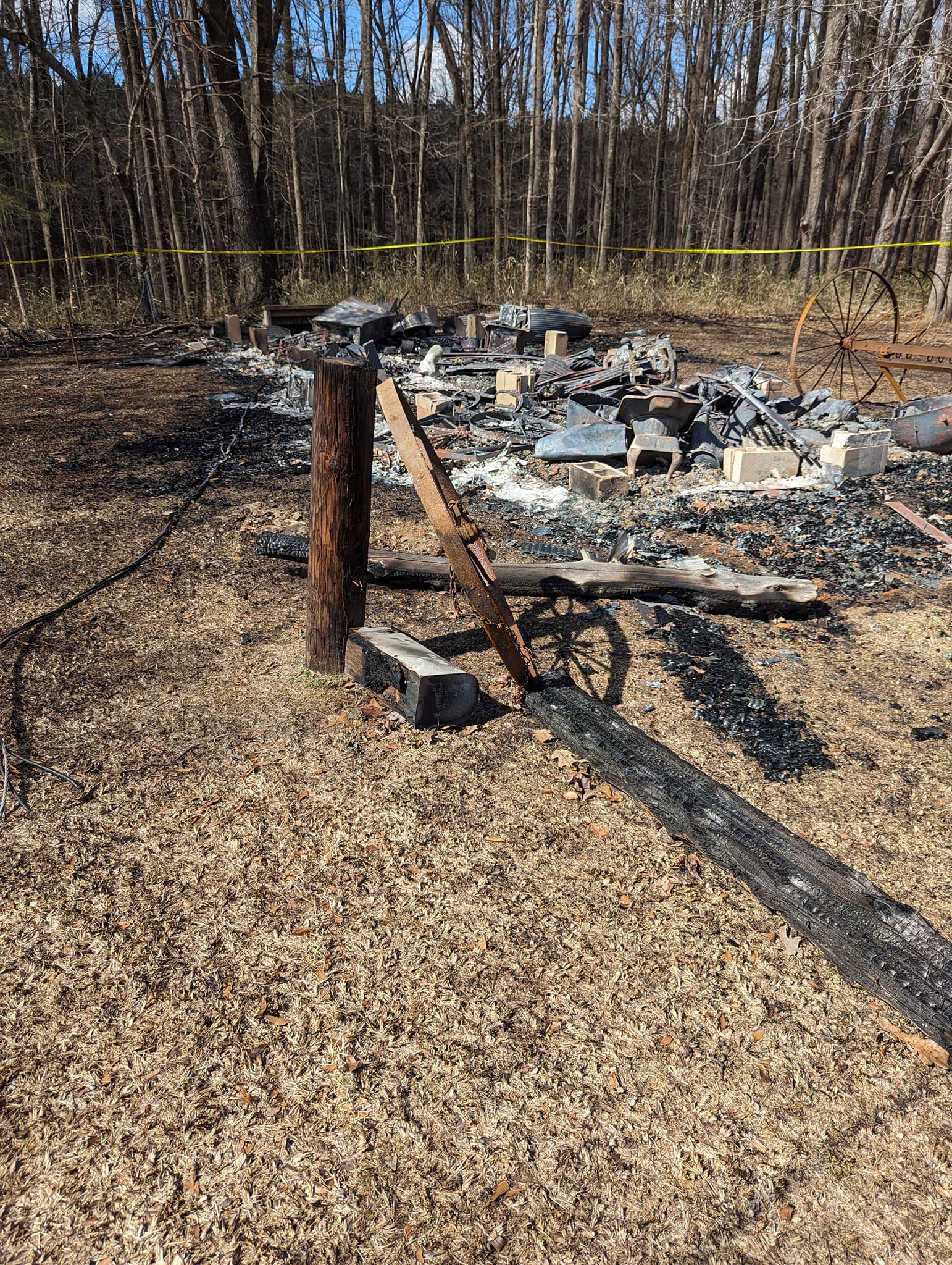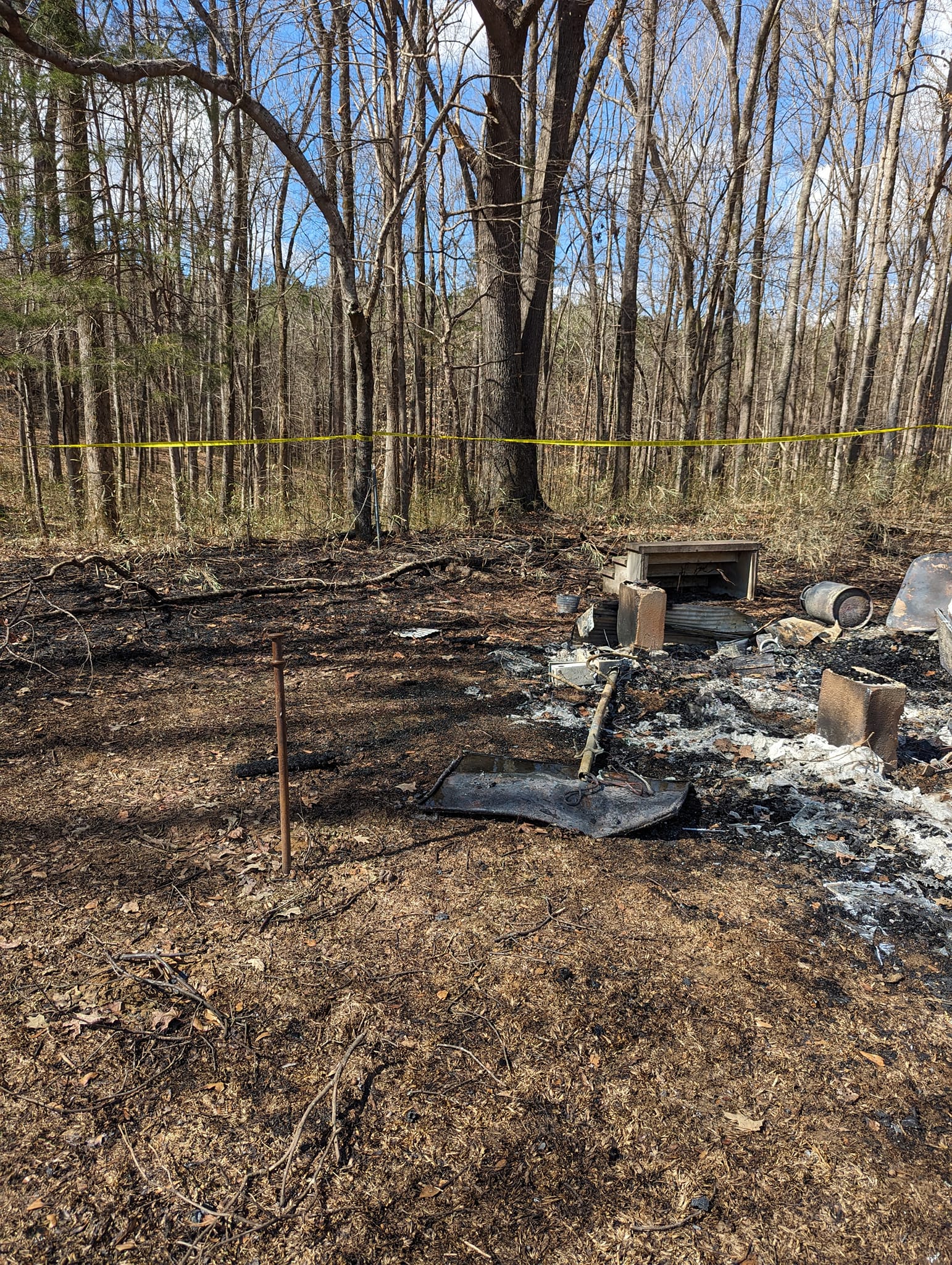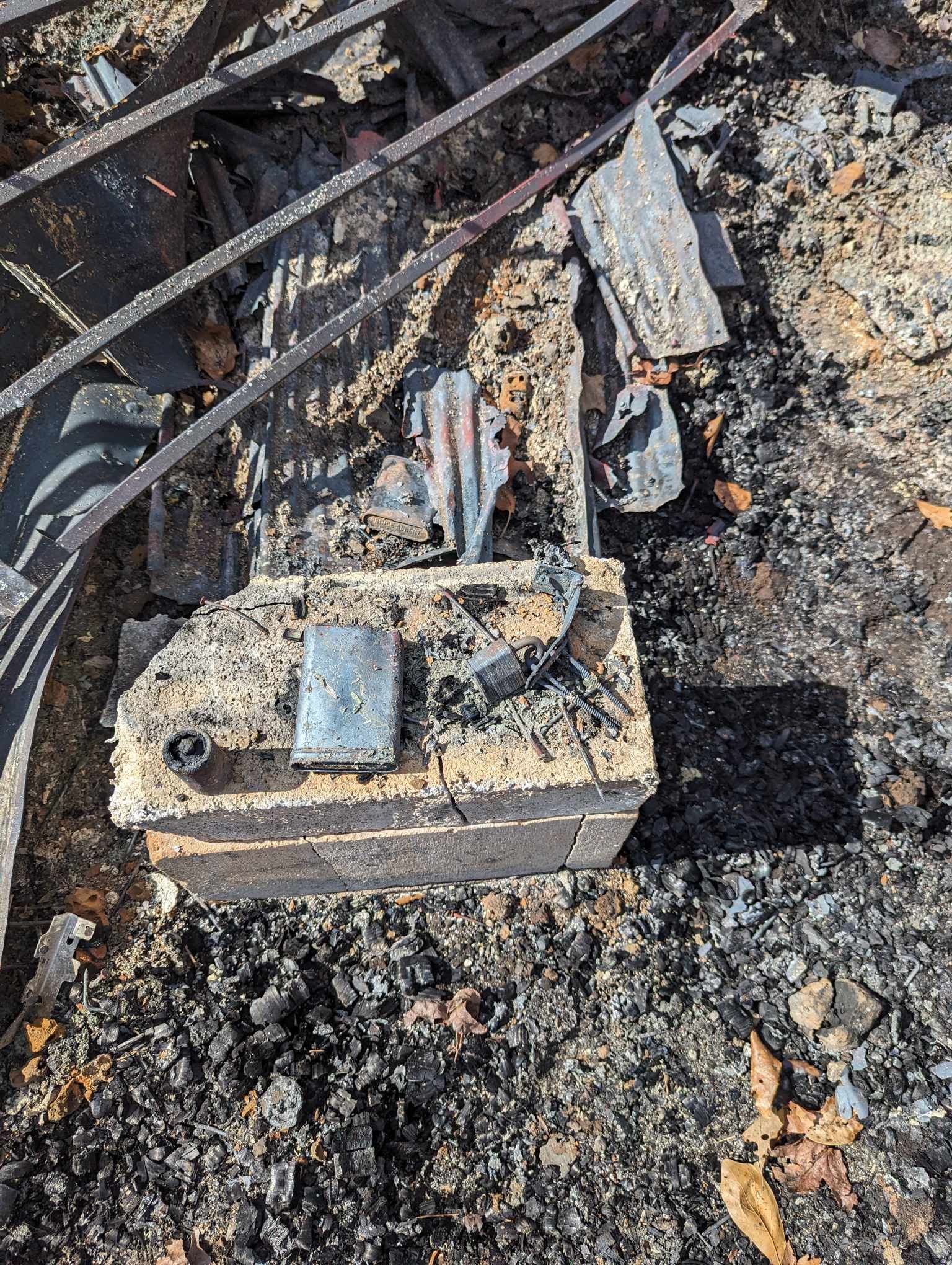Hostility & Hatred
And the Preservation of Black History
By Joe Austin

My name is Joe Austin, and I worked with the Mt. Zion Memorial Fund (MZMF) to locate the grave of Belton Sutherland at St. John MB Church in Camden, Mississippi. We dedicated a memorial on his unmarked grave in 2018. It was an amazing experience to conduct the field research for the project, and I was so proud to work with the pastor and congregation at St. John MB Church. Dr. T. DeWayne Moore–the executive director of the MZMF–published his research about Belton Sutherland in an April 2018 issue of Living Blues magazine.
Click HERE to check out Belton Sutherland’s headstone and read more about my work on the memorialization project.
For more than a decade, Mary Frances Hurt has been sounding the alarm about encroachment onto St. James MB Church Cemetery. The burial ground is not only the final resting place of her grandfather and many other family members, but its also perhaps the last remaining physical historical resource proving that a large community of African Americans once existed in Avalon. Ms. Hurt has had a difficult time drawing attention to problem, which is complicated, multi-faceted, and mired in the disturbing history of intransigent racism in the Magnolia State.
In November 2022, the quarterly cultural news magazine, the African American Folklorist, published an article by Valerie Turner hoping to draw attention to the desecration of the burial ground [Click HERE to read Turner’s piece]. In August 2023, MZMF Vice President Shannon Evans wrote a blog post on the MZMF website about the decision to install a private historical marker at the entrance to St. James MB Church Cemetery [Click HERE to read Evans’ piece]. The MZMF website also promoted the dedication ceremony of the historical marker in October, and I decided to attend the Mississippi John Hurt Memorial Walk to once again pay my respects to an artist who made such an indelible imprint on the development of American music.
The historical marker, which was funded through a grant from the American Historical Association and designed by the MZMF and the MS John Hurt Blues Foundation, is beautiful. John Hurt himself had to be smiling (and maybe responsible for it being such a gorgeous, crisp, fall day for friends, fans, and relatives gathered on his behalf).
After the ceremony at the cemetery, we walked back to the historic house museum of MS John Hurt, which now sits adjacent to the relocated St. James MB Church on the heir property owned by Mary Frances Hurt. The day was filled with the music of several indebted musicians, who came out to pay tribute to the musical legend from Avalon, and our stomachs were filled with soul food from Ann’s Kitchen.
It’s hard to believe that a fire burned down the Mississippi John Hurt Museum in the early morning hours of Wednesday, February 21, 2024, just hours after it received Mississippi landmark status from the Mississippi State Historic Preservation Office. The Carroll County Sheriff’s Office, along with other federal investigative authorities, are still investigating the cause of the fire, but it’s hard to believe that the historic home no longer stands on the property. It’s hard to believe that it burned down–along with all the historical photographs, relics, and ephemera about the life and legacy of the author of “Avalon Blues.” Indeed, it’s hard to believe that the hatred and hostility that marred the memorial walk in early October 2023 had absolutely nothing to do with the destruction of the museum.
To view the news coverage of the museum’s destruction, please visit the Channel 3 website HERE
For more information on the destruction of the Hurt Museum, please visit the website of the Smithsonian Magazine – HERE
In early February 2024, MZMF submitted a grant proposal to the African American Cultural Heritage Action Fund to hire preservation architects to conduct a pre-preservation study of the Hurt Museum. Below you can read an excerpt from the proposal as well as download a copy of the entire document for review. After the museum’s destruction, MZMF reached out to the sponsor to tell them the news and ask about making a post-submission addendum to the proposal. We will update you on our progress with the grant proposal as we move forward in the process….
2024 African American Cultural Heritage Action Fund Grant Proposal
By T. DeWayne Moore, Executive Director of the MZMF
In 1990, music journalist Dave Ferman argued that “plenty of people have a grail to pursue—an actual physical spot that leads us into the past, into a greater understanding of ourselves and the things we love.” In 1990, many blues lovers believed that they had found their grail in “a little cabin, listing and battered,” on the farm of Carter Stovall outside of Clarksdale. “You could say that as a grail, this little cabin isn’t much. But if you’re a blues fan this feels like a sanctuary.”
The state of Mississippi has arguably the richest cultural and historical resource in the nation—the blues. Yet, it also has a very problematic past in terms of historic preservation in African American communities—especially regarding physical structures directly associated with the blues before World War II.
African Americans, in the eyes of the state, had no history worth preserving. The laws and culture of racial segregation were about resource hoarding, and the maintenance of white supremacy requires not only the silencing and erasure of African American history, but also the violence of a segregated, exploitative economy, which often prevents African Americans, such as the parents and grandparents of Muddy Waters and the ancestors of Mary Frances Hurt, from achieving economic independence through property ownership. The Delta Blues Museum in Clarksdale features one of the structures around which early tourist brokers built the blues tourism industry—the cabin in which McKinley “Muddy Waters” Morganfield allegedly lived on the nearby Stovall farm. Yet, the provenance of the cabin from Stovall’s has always been in question.
The provenance of the historic home of John Hurt, however, was not in question. For 40 years, Hurt lived in a three-room shotgun house on the A.R. Perkins farm with his partner, Jessie Cole, and their son, “Man.” On the north side of Valley/Avalon Road, the house sat up on a little hill so that Hurt could keep an eye on Perkins’ cattle. Hurt eventually moved to Grenada, where he died in 1966, but shotgun house remained on the Perkins farm until 2002, when the descendants of Perkins sold the land to Dave Murphy. When Murphy got ready to sell the land to Ronald Upchurch, who planned to build a new home, his daughter Keye Murphy Williams convinced her father to retain the half acre lot to preserve the historic home. Even though one “blues professional” [perhaps Steve LaVere] offered to buy it, Murphy refused to sell it. Instead, he approached Hurt’s granddaughter, Mary Frances Wright Hurt, in 1999, explaining that she could have the house if she could get someone to move it. Thus, she enlisted the support of Peoples Bank and Trust in Carrollton and a moving company in Kosciusko, and she transported it to her family’s land—land that her great grandfather Jerry Richardson had first purchased in 1921. Wright formed the Mississippi John Hurt Blues Foundation in 2001, transformed the structure into a museum, and started organizing an annual blues festival celebrating her grandfather’s music.
In 2023, MZMF Vice President Shannon Evans drove out to the Hurt property to meet with the Mississippi State Historic Preservation Office, which intended to make the Hurt Museum a Mississippi landmark and submit a nomination to the National Register of Historic Places. The museum was made a Mississippi landmark only a few hours prior to its destruction by fire during Black History Month.
To download and read the MZMF’s entire grant proposal for the pre-preservation survey of the Mississippi John Hurt Museum, please click HERE









![MJH Memorial Walk The dedication ceremony for the historical marker at St. James MB Church Cemetery in October 2023 [Photo © Joe Austin 2023]](https://i0.wp.com/mtzionmemorialfund.com/wp-content/uploads/2024/03/IMG_1980-scaled.jpg?resize=1165%2C1553&ssl=1)
![MJH Memorial dedication The dedication ceremony for the historical marker at St. James MB Church Cemetery in October 2023 [Photo © Joe Austin 2023]](https://i0.wp.com/mtzionmemorialfund.com/wp-content/uploads/2024/03/IMG_1970-scaled.jpg?resize=1165%2C1553&ssl=1)

![Hurt Memorial Walk lunch Mary Frances Hurt standing with the attendees in front of the MJH Museum in October 2023 [Photo © Joe Austin 2023]](https://i0.wp.com/mtzionmemorialfund.com/wp-content/uploads/2024/03/387165037_280135964900944_5292796299189500270_n.jpg?resize=1165%2C1553&ssl=1)
